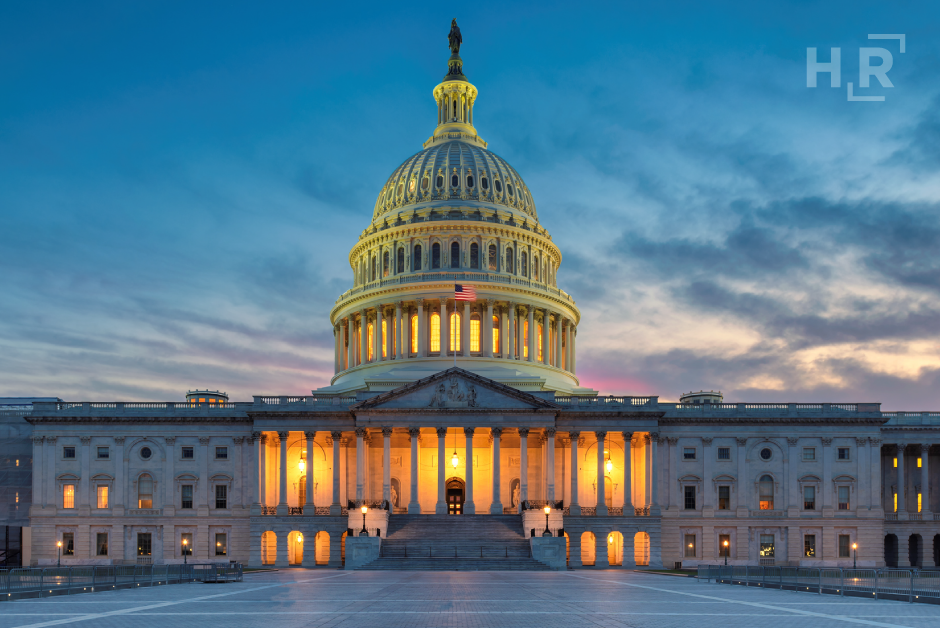The U.S. Government Shutdown Freezes E-Verify: What Employers Must Do Now
The U.S. government shutdown has taken the federal E-Verify system offline, leaving employers unable to process cases. Learn what employers must do now to stay compliant with Form I-9 and manage cases when the system reopens.

Update: As of October 10, 2025, E-Verify is back online. Please see our latest update here
This article was published on Forbes, October 2, 2025
The U.S. government has officially shut down, and with it, the federal E-Verify program has gone dark. For employers that rely on E-Verify to confirm work authorization, the shutdown leaves hiring teams in a holding pattern. Yet while the system is offline, employment eligibility obligations have not disappeared. Employers must still complete Form I-9s on time and prepare to reconcile E-Verify cases once funding is restored.
What’s Offline
Effective October 1, U.S. Citizenship and Immigration Services (USCIS) suspended all E-Verify functions. Employers cannot create cases, enroll in the program, update accounts, or resolve tentative nonconfirmations (TNCs). Employees cannot use myE-Verify or Self Check, and the agency’s call centers and training webinars are closed. Even E-Verify+, which incorporates the electronic I-9 process through the myE-Verify portal, is stalled until further notice.
For employers, this means hiring processes that normally run in parallel with E-Verify are fractured. The government’s policy suspends the usual “three-day rule” for creating cases, and USCIS has pledged to provide guidance once the system reopens. Until then, the responsibility for compliance shifts entirely to the I-9 process.
What Doesn’t Change
Shutdowns have no effect on Form I-9 deadlines. Employers must still ensure employees complete Section 1 on or before their first day of work, and that Section 2 is finished within three business days of the start date. A completed I-9 is not optional or delayed because E-Verify is unavailable.
This underscores a critical compliance reminder: E-Verify is never a substitute for the I-9. Even in ordinary times, it is a supplement. During a shutdown, it is the I-9 that anchors compliance.
Temporary Flexibility
USCIS has paused certain rules to ease the strain on employers and employees. Employers will have additional time to create cases once E-Verify resumes. Workers navigating TNCs will not be penalized for delays caused by the shutdown, and the countdown clock for resolving mismatches will restart when the system comes back online. Employers are prohibited from taking any adverse action against employees stuck in interim status.
Federal contractors face additional challenges. The Federal Acquisition Regulation requires contractors to use E-Verify as a condition of their agreements, yet deadlines may slip during a shutdown. USCIS has historically directed contractors to contact their contracting officers to discuss extensions, though approval ultimately rests with those officials.
Employers using DHS’s new “alternative procedure” for remote inspection of I-9 documents can continue doing so during the shutdown. Those already enrolled in E-Verify remain eligible to conduct virtual inspections. However, employers that are not enrolled cannot retroactively apply the remote option later.
Preparing for the Reopening
The shutdown creates a backlog that employers will need to address once the government restores funding. Pending cases are expected to queue and will need to be submitted once E-Verify is back online, subject to USCIS guidance. HR teams should also track all hires during the shutdown and maintain complete I-9 files, including supporting documents required for photo matching.
Employees with pending TNCs may grow anxious as their cases sit unresolved. Proactive communication can prevent misunderstandings and reassure workers that delays are government-driven, not performance-related. Documenting these communications, along with any hiring activity during the shutdown, will help demonstrate good-faith compliance if questions arise later.
A Familiar Fragility
This is not the first time E-Verify has gone dark. Unlike USCIS’s fee-funded programs, E-Verify depends on congressional appropriations. That makes it uniquely vulnerable to political stalemates. Whether required by law or adopted as a best practice, employers should recognize its fragility and plan for disruption.
The bottom line is straightforward: Form I-9 requirements remain in force, E-Verify deadlines will be tolled until the system returns, and compliance depends on meticulous recordkeeping and preparation. In an era of heightened worksite enforcement, vigilance is essential. Government shutdowns may be temporary, but a lapse in compliance can carry lasting consequences.
Release Date: October 2, 2025

Alonzo Martinez
Alonzo Martinez is Associate General Counsel at HireRight, where he supports the company’s compliance, legal research, and thought leadership initiatives in the background screening industry. As a senior contributor at Forbes, Alonzo writes on employment legislation, criminal history reform, pay equity, AI discrimination laws, and the impact of legalized cannabis on employers. Recognized as an industry influencer, he shares insights through his weekly video updates, media appearances, podcasts, and HireRight's compliance webinar series. Alonzo's commitment to advancing industry knowledge ensures HireRight remains at the forefront of creating actionable compliance content.